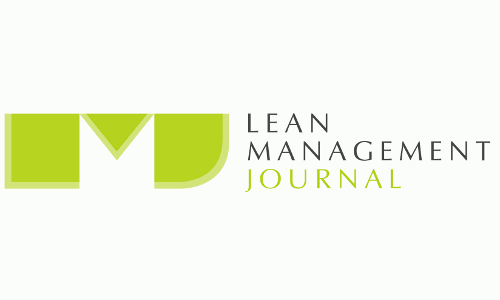Sustainable Operations Excellence
With global competition at such a dynamic level that any day lost without operations improvement imperils the company’s economic position; the status quo simply leads to failure. In order to out pace this competitive environment, companies are implementing strategies to establish competitive advantage as a low cost producer or as a stand out through product differentiation. The overall strategic intent is the creation of systems with resources that are capable, flexible, and reliable to a performance level that establishes distinctive competencies in quality, efficiency, innovation, and responsiveness. This distinctive competency thereby establishes greater value for both the customer and shareholders. One of most prominent methods many companies are currently choosing to create these distinctive competencies is operations excellence – specifically through the application of lean manufacturing.
The choice of operations excellence as a strategic initiative to create competitive advantage signals the confidence executives have placed in the ability to achieve cost reductions, reduced lead-times, and improved quality. For many companies, the need for improvement is beyond mere competitive to that of simple survival. Businesses must realize that the time, effort, and assets utilized to implement operations excellence can be disastrous to the overall business if the initiative leads to failure.
Today, most companies have an understanding of the various techniques associated with lean manufacturing that has been gained through a multitude of books, seminars, and consulting expertise. Nevertheless, industrial benchmarks reflect that nearly two-thirds of operations excellence implementations fail. With all the techniques and methods available, why have so many failed at this strategic endeavor? Finding the business in a position of basic survival and loss of competitive edge, company executives embark upon strategic initiatives to improve cost structures and grow revenue. In the rush to make something happen, traditional strategic methodology is used with a narrow scope of approach, lack of understanding, lack of planning, and more importantly, lack of change leadership required to achieve competitive advantage.
The strategy of choice is either major cost reductions in order to be the low cost producer, or product differentiation via quality and services provided. Management expectation is to drive the strategy from corporate down to individual operations, linked only to traditional tangible business metrics in hope to secure rapid impact. In order to achieve the rapid results desired, individual operations turn to the various opportunities promised through implementation of lean manufacturing techniques. However, based on existing traditional models, execution relies heavily upon the application of specific lean techniques through single events leading to simple incremental improvement in efficiency providing one time cost reductions or productivity gains.
Characteristically, information gathered during benchmarking, review of industry best practices, or the enthusiasm to gain advantages similar to Toyota reinforces managements desire to utilize operations excellence as the strategy of choice. In many cases, market conditions have placed the business in a corner from which rapid cost reductions are seen as the only course of action to protect shareholder value. Traditional management finds it easier to reduce headcount for productivity and profitability than the creation of greater market share or new innovative capabilities that increase return on investment.
In this scenario, management selects a few areas that promise the greatest impact through cost reductions, productivity gains, quality improvement, etc. In order to head up this new program, a manager is assigned based upon a track record of achievement and getting things done fast. Normally, the approach is project management style coupled with command and control. This traditional model is concerned with the implementation of technical solutions, gaining results, and moving on to the next firefight. Little or no concern is given to the “soft” aspects of implementation such as organization development and cultural leadership.
Typically, the launching of the initiative is accomplished with great fanfare and announcements that the company is launching operations excellence. A mass meeting is held to tell employees and banners, coffee mugs, and polo shirts are handed out – all in the thought that the employees will step right up with full commitment and ownership of the endeavor. Nonetheless, the employees are skeptical at best, moan that it’s another flavor of the day program, or read right through the situation and see that no matter what the company calls the program, it comes down to cost reductions.
After months of planning and leading specific Kaizen events, the company finds itself no closer to the high impact results desired while corporate management is applying greater pressure for performance improvements, countermeasures, and additional resources to get on track. The project manager, usually given the title of Lean Manufacturing Manager, commensurate with his or her level in the operation is working diligently at identifying and applying the various techniques. True to the traditional models, the project is in a very specific area with a demanding top down focus on the application of a selected technique used to reduce cost with minimal operator involvement. Many times there is little or no planning and the whole perspective is that of treating the initiative as a single event or at best a series of disjointed events.
The small gains that are achieved can not be sustained by the workforce assigned in the area since they were not involved, have no set expectations, and are not monitored for performance. Many times, with the abundance of daily management issues and firefighting activities, the direction of the project manager is re-focused to another area of the operation removing the source of knowledge, individual pacesetter, and daily management attention permitting the improvement changes to regress back to old norms. Little or no time is spent on the organizational change leadership aspects so vital to creating the new values, expectations, standards and behaviors that support sustainable change.
Current traditional business and strategic models attempt to drive implementation of operations excellence through events focused on the specific techniques of lean in order to yield rapid high-impact results. This model fails to develop and mature resource capabilities into distinctive competencies required for sustained competitive advantage. Operations excellence, therefore, must be an organization transformation initiative in which change leadership roles are a crucial set of characteristics of overall success. The achievement of distinctive competencies will be rooted in the development and maturity of organizational structures, processes, and cultures that have been lacking in a majority of previous transformations attempts which lead to the high level of failure.
Root cause of initiative failure in a traditionally managed organization stems from the fundamental lack of change leadership. There is a lack of clear understanding that implementation of sustainable operations excellence is not simply about deploying techniques of lean manufacturing, but also about the creation of distinctive competencies in the business resources. Resource capabilities built upon knowledge, establishment of new values, expectations, behaviors and standards of performance, as well as alignment of the organizational structure coupled with process improvement, supports the new strategy. The real bottom line realization is that sustainable competitive advantage through operations excellence is only achievable through organizational transformation.
Dr. Casey is a member of Celerant Consulting with more than 18 years of experience spanning all facets of operations management, lean and change leadership. In addition to unparalleled industry and consulting experience, Dr. Casey has published; The Role of Change Leadership in a Operations Excellence Model, and Strategic Lean Transformation: Turning Traditional Lean Paradigms into Distinctive Competencies, while Utilizing X Matrix in the Strategic Leadership Process will be released in the spring of 2010.
Contact him at darrellcasey@comcast.net.






